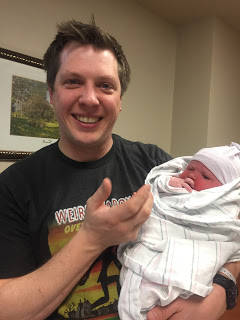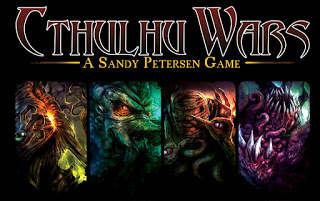Following up on my interview with Ed Healy, I am pleased to present another behind-the-scenes interview with someone responsible for bringing Cthulhu Wars to life; Arthur Petersen, Project Director for Petersen Games.
As the previous interview, I wanted to get some behind-the-curtain sort of stuff, this time focusing on production itself.
Reminder that Onslaught 3 for Cthulhu Wars will go live on Monday morning; this weekend I’ll be doing a series of posts to whet everyone’s appetites for this wonderful game and it’s unworldly terrific miniatures.
Q: Can you give a quick definition of what a Project Director does?
A: Sure. At Petersen Games it mostly means making sure Sandy’s ideas for a game become reality. Making a tabletop game includes so many parts – from design and playtesting, to art and miniature sculpting, game layout and marketing, all the way to manufacturing and shipping. I coordinate the diverse parts and oversee the teams who put it all together. Of course, because we are fairly small (only 6 total, including employees/owners), it also means for me being heavily involved in some of those parts. For example, I double as the entire “manufacturing” team at Petersen Games – directly working with our factories and handling everything that has to do with the physical creation of the game itself.
Q: What sort of logistical challenges do you think are unique to a large board game type KS campaign like Cthulhu Wars, as opposed to a smaller board game or RPG?
A: Logistical complication is mostly determined by the array of products and product combinations sold. For example, we sort of shot ourselves in the foot with our previous Cthulhu Wars campaign (Onslaught Two) by offering over 50 unique products, and then going further and allowing a full a la carte selection. Out of around 5,000 backers there were over 2,500 unique combinations of rewards! That meant the “pick and pack” job – the sorting of each reward in our fulfillment warehouses took longer than it would have if most backers got the same bundle of products. Another issue with logistics for the sorts of games we do is the weight – no one likes to pay a lot for shipping. But when you are sending rewards that way over 50 lbs., well, someone has to pay it!
Q: Other than the well-known issue of Chinese New Year (which I see you actually included in your project plan timeline), what sort of special considerations do you have to make when dealing with China-based manufacturing?
A: One of the biggest hurdles is communication. While most factories (and all factory brokers) employ someone who can speak English, it’s rarely perfect. Sometime I just have to ask our art director to make a quick image or diagram of what I need to communicate about some manufacturing issue. Their response for something will tell me they didn’t understand me, so I use pictures, basically. And sometimes they have to respond with pictures. Much of the time, however, with a detailed spec sheet it’s clear to both sides what’s going on. Other than communication, my main advice to anyone getting into Chinese manufacturing is to provide PERFECT specs when you want a quote for pricing.
 |
| Arthur Petersen (left) |
Q: What’s the biggest challenge when it comes to producing larger projects like Cthulhu Wars?
A: That’s hard to answer. If you ask Sandy, he’ll probably say the playtest time or getting the sculpts done faster. If you ask our business manager, he’ll say trying to get the cost down, since our big figures and products mean our margins can suck, even when we charge seemingly high prices. As for me, it’s changed over the years. What was most difficult for the first Cthulhu Wars KS was not the most challenging for O2, and I bet it will be different for this new one. Frankly, any answer I give will probably be a reflection of where I am as I learn to manage our teams, as opposed to something specific for Cthulhu Wars.
Q: How has the production process changed from the original game to today, where you’re about to start the third Kickstarter campaign in the series?
A: Let me answer with a story. Cthulhu Wars has, as you may know, 6 Acolyte Cultists figures per faction, as well as 2 little markers (for Doom and Power respectively) per faction. Well, when you create steel molds for the plastic pieces (via a process called tooling), you can make several identical cavities to make more than one of the same piece at a time. Because we had never made a game before, we didn’t really micro-manage the tooling process like we do today. The factory unfortunately made a steel mold that contained 2 cavities for the cultists, and 2 cavities for the doom/power markers. This meant that with each pressing of the mold in a given color of plastic, 2 cultists AND 2 doom/power markers popped out. But, if you recall that you need 6 cultists and 2 markers, which is a ratio of 3 to 1, this meant that we had 3 times as many markers as we needed. They’re still in China somewhere, probably in a land fill at this point. It was a waste of plastic that WE had to pay for via the factory charging us 3x the cost to make the markers than we should have. We only learned this when I flew to China and then shortly switched factories (who modified the steel molds at great cost to us). Now, we make them all in appropriate quantities for better cost efficiency. That was a little longer than I meant to take, but the bottom line is that now we manage our production on all fronts much more carefully. Now I wish I had told a sculpting story – we’ve learned a lot in terms of sculpting too!
Q: In regards to Kickstarter, does using KS to launch a game or group of supplements change the production process? If so, how?
A: I’m not sure how to answer this – I’ve only ever worked on games that were funded by Kickstarter, but I’ll do my best. The main consideration I’d suspect, as compared to direct to market products, is that we are beholden to our backers. When dealing with a massive game product line like Cthulhu Wars, so many things can be delayed. And what usually happens is that a bunch of little delays (in playtesting, editing, art, sculpting, tooling, manufacturing, shipping), etc. all add up together to create what seems to the backers as one BIG delay. We experienced this with our Orcs Must Die! boardgame in which every part seemed to take longer than we hoped, but none of the segments of the development cycle, on its own, was really delayed. Yet, their sum total pushed us back nearly a year! Backers obviously hate waiting one day longer than when we promised the delivery would be!
Q: How does the figure sculpting process work? How far in advance do you need to begin before you have a finished figure in hand?
A: First, Sandy develops a style guide for the model, with descriptions, explanations and reference art (from the internet or wherever), and provides this guide to the concept artist. Second, the concept artist draws a front and back, black and white illustration to Sandy’s specification. This is often a back and forth process with Sandy and the artist to make sure it’s exactly as Sandy envisioned; it takes about a week or two to lock down per concept. Once we have the final concept, I provide it to the sculptor. We now use 3D sculpting, which means revisions and review can be done with a quicker turnaround (although the full time to sculpt is about the same – roughly 4-5 weeks for most sculptors, unless the figure is REALLY big; Dire Cthulhu took 8 weeks, and the Bloated Woman took a full 9 weeks to make!). Our average sculpt on Cthulhu Wars O3 took 5.2 weeks to do, including feedback and revisions. Once we have the final sculpt, we need to confirm its size is correct, and then it’s done! Make some turntables and show it off on our Kickstarter and social media!
Q: To what extent does the game design itself influence the physical design and production aspects of bringing the game to life?
A: This isn’t a direct answer to your question, but we always like our sculpts to seem in motion – action poses for the most part. Not every time, but you’ll notice that our models seem to mostly be doing something, or about to do something, rather than just sitting there. The Dark Young’s tentacles are moving around with mouth agape, in a howl, for example. This, I think, is an extension of Sandy making dynamic games – he never would want the pieces to seem static when the game will be fast moving.
Q: What advice would you give to aspiring game designers, from a production design perspective?
A: In a few words, I would say to understand that there are a great many ways to reproduce a similar game mechanic or experience with different physical pieces. Play around with what is possible physically – switch tokens for dice, and miniatures for cards. Be creative with what you want your components to be. It may seem counter intuitive, but if you look at Cthulhu Wars, one thing you’ll notice is a relative dearth of non-plastic pieces. Sure, the map is big, and you have Faction Cards and Spellbooks, but that’s about it. It’s almost the exact opposite of many games that just have oodles and oodles of little tokens to represent various gamestates. Cthulhu Wars, for example, achieves an amazing amount of depth and unique ability interaction without resorting to “poison” counters, or whatnot. Of course, game styles vary considerably, but my point is that you could imagine Cthulhu Wars done entirely different with a zillion other pieces. Instead, Sandy wanted the focus to be on the miniatures, so there’s PLENTY of those, with a minimum of other things. Fit YOUR game’s physical pieces to how you want the game experience to be!
__________
Disclosure: I was sent a bag of Cthulhu Wars figures to use in helping boost the Onslaught Three Kickstarter (you’ll see them soon). I paid for the first Kickstarter and Onslaught Two myself, however, and will pay for Onslaught 3 when it launches Monday.









